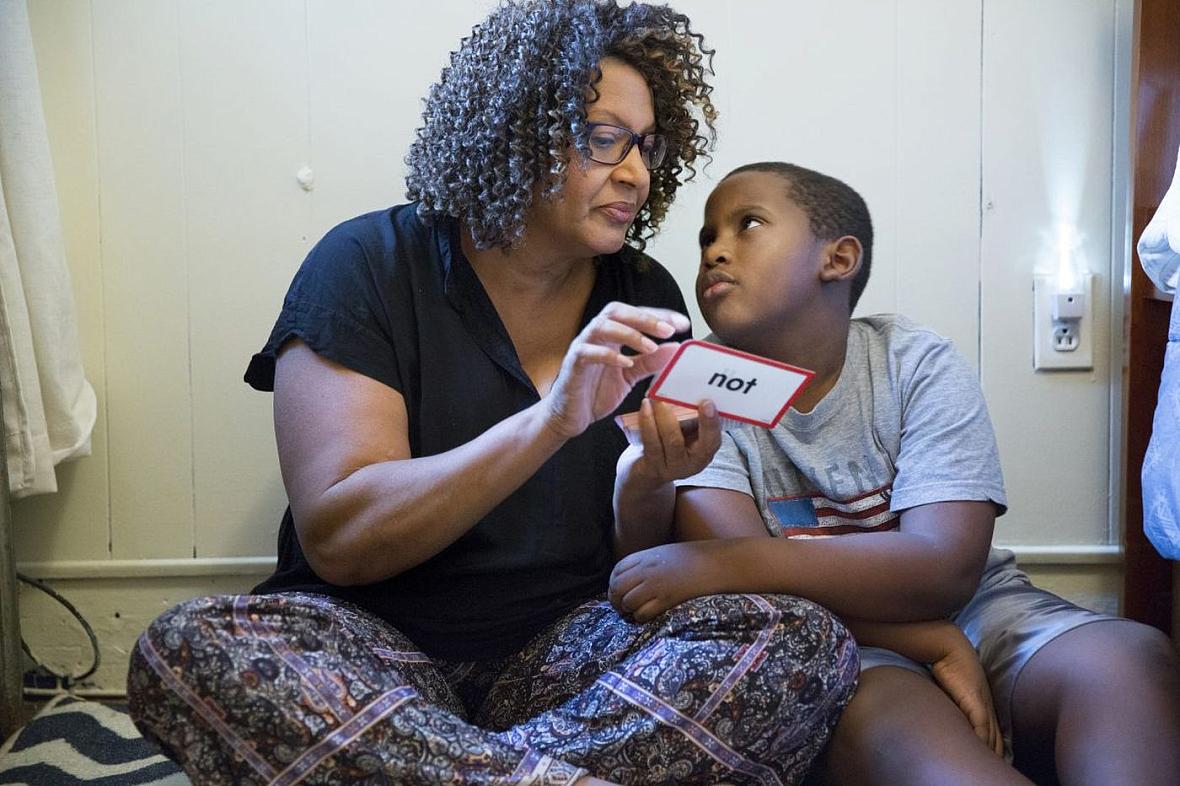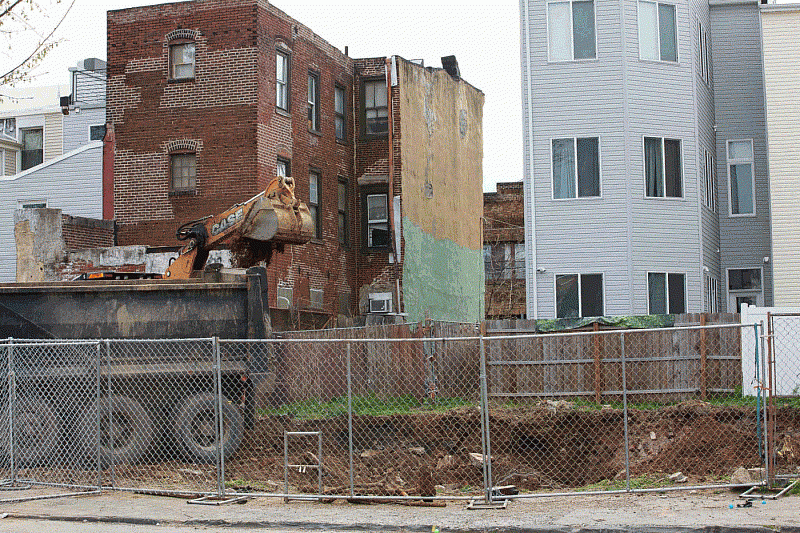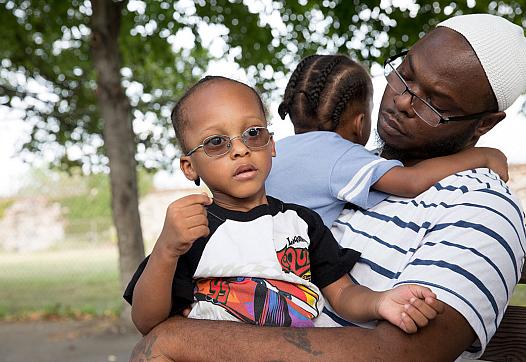How the ‘Toxic City’ investigation has protected Philadelphia children from environmental perils
This story was originally published in The Inquirer with support from the USC Annenberg Center for Health Journalism.

(Photo Credit: Jessica Griffin/File Photograph)
After two years of reporting and $15,000 in scientific testing, the five-part “Toxic City” series has made Philadelphia cleaner and safer for kids in their homes, outdoor play spaces, and schools:
Four new protective laws; 770 landlords fined; $15.7 million in emergency school repair funds; more than 700 visits by health inspectors at addresses in neighborhoods with high rates of childhood lead poisoning; $900,000 in additional city money to protect kids from lead paint in their homes; nearly 10 acres of lead-contaminated land slated for cleanup in the city’s “river ward” neighborhoods; 3,400 children learning in eight newly repaired “lead safe” schools, with 38 more to be cleaned of lead paint in coming months.
Here are some questions and answers about what city, state, and school officials have accomplished in the wake of the Inquirer’s “Toxic City” investigation, and some shortfalls that remain.
Your project on lead paint in rental homes showed how landlords like NFL Hall-of-Famer Marvin Harrison flouted a 2012 law that required them to certify their rentals were “lead free” or “lead safe” before renting to young families with children ages 6 and under. Has the city started enforcing this law, as promised?
Not completely. The city each year issues 80,000 rental licenses, covering roughly 220,000 rental units. That number doesn’t include thousands of landlords who fly under the radar and never bother to get rental licenses. While the city has started a campaign to crack down on landlords who fail to comply with the lead paint certification law, the majority of landlords still are not in compliance. One major problem, city officials say, is that landlords hide behind limited liability corporations. But that’s about to change. Earlier this month, the city passed a law, introduced by Councilwoman Blondell Reynolds Brown, that requires corporations with rental licenses to disclose the name and address of at least one of the officers so the city can pursue violators.
You wrote that the city hadn’t collected a single fine against any landlord who failed to certify rentals as “lead free” or “lead safe” as required by law. Has that changed?
Yes. Since our story first exposed this shortcoming, the city has collected more than $67,000 in fines for more than 770 violations, letting landlords know they face consequences for lead safety violations.
Has the city’s Department of Public Health taken any new steps to prevent children from exposure to lead paint in homes, particularly in hot-spot neighborhoods with the highest rates of childhood lead poisoning?
Yes. Since “Toxic City: Lead Paint” was published in October 2016, city health workers knocked on more than 700 doors of homes in North and West Philadelphia to offer help and advice about the dangers of lead paint. Of those, families in 200 homes welcomed them inside. City health workers also trained supervisors in the city’s Department of Licenses and Inspections to recognize potential lead hazards when responding to unrelated complaints at homes with pregnant women or small children, and refer those cases to the Health Department.
In December 2016, Mayor Kenney promised to add money to the city’s Lead and Healthy Homes Program. Was that promise kept?
The mayor added $900,000 in fiscal year 2018. Almost half, or $425,000, was used to remediate lead hazards in homes owned by people who didn’t qualify for a federal grant. Health officials also used the new money to hire 11 staffers and to purchase XRF guns (handheld X-ray fluorescent devices that detect lead paint) and vehicles for inspectors. Kenney renewed the $900,000 for this fiscal year. The city also received new federal dollars. Just this month, the U.S. Department of Housing and Urban Development awarded Philadelphia $4.1 million to help repair or remove lead paint in 240 homes with low-income families with children.
Your investigation pointed out that, unlike Baltimore and Cleveland, Philadelphia’s Health Department only activates cases and investigates the homes of kids who have high levels of lead poisoning. Is that still the case?
Yes. The Health Department still investigates lead poisoning cases only when children have a blood lead level of 10 micrograms per deciliter or higher. Other cities open an investigation at five micrograms per deciliter, the level at which the Centers for Disease Control and Prevention says health officials should take action. This means that Philadelphia health inspectors didn’t investigate the homes of nearly 1,800 kids with blood lead levels above the CDC action level in 2017, the most recent data available. Some experts have criticized the Health Department’s failure to act in these cases, noting that permanent neurological damage, including loss of IQ, impulsivity, and hyperactivity, can occur in children who have very low levels of lead in their blood.
TOXIC CITY: TAINTED SOIL June 2017
Are construction crews still spreading lead dust in the city’s gentrifying neighborhoods of Kensington, Fishtown, and Port Richmond when they excavate dirt to build new homes in areas near old industrial smelter sites?

Fishtown area construction without dust control. (Photo Credit: Jessica Griffin/File Photograph)
Not as much. “Toxic City: Tainted Soil” disclosed how the construction boom in the city’s “river ward” neighborhoods led to contamination of stoops and playgrounds, as work crews violated the city’s dust-control regulations. In the weeks after the June 2017 investigation, the city’s Department of Licenses and Inspections stepped up, inspecting more than 130 work sites in the river wards and issuing stop-work orders when developers were violating dust-control measures, such as wetting down soil during excavation. City Council also enacted two laws that tighten dust-control regulations during demolitions.
What happened to “Mount Wawa," the neighborhood nickname for the grassy mound behind the Wawa on Aramingo Avenue in Kensington where children liked to play and sled? Your testing showed that the hill had high levels of lead in the soil.
The State Department of Environmental Protection also tested the soil in this area, the site of a former lead factory known as Anzon, and confirmed our results — “unacceptable” levels of lead contamination at 26 locations around this busy shopping district. This prompted the agency to enter into an agreement with the property owners to clean up Mount Wawa and the surrounding acres. The hill has been capped with fabric, topped with 2 feet of clean fill dirt, and planted with grass. Smaller areas are not yet completely cleaned up and some neighbors remain frustrated.
TOXIC CITY: SICK SCHOOLS May 2018
It was shocking to learn that schoolkids didn’t have the same protections from lead hazards in their classrooms as they would in rental apartments. Is that still the case?
Not anymore. City lawmakers earlier this month passed legislation to help ensure that children will no longer get lead poisoning from their public schools. The School District of Philadelphia must certify its buildings as “safe from lead-based paint hazards” or meet a 90-day deadline to repair damaged paint. Until now, only landlords were required to have such certification if young children were living in their rental homes. Council members worked with the Philly Healthy Schools Initiative, a coalition of parents, teachers, and health advocates, to enact the new law.
“Toxic City: Sick Schools” featured a heartbreaking photo of a boy with green glasses who was lead-poisoned in his classroom. How is he doing?
Dean Pagan was 6 when he ate lead paint chips that fell on his desk in his first-grade classroom at Watson Comly Elementary in Northeast Philadelphia. He was hospitalized with a blood-lead level nine times higher than the level at which doctors worry about permanent brain damage. Dean is still suffering. Now in second grade at a public school in Ambler, he’s impulsive, can’t sit still, lost some cognitive abilities, and goes to therapy once a week, his mom, Cristine Pagan, said earlier this month. His tragic case became a catalyst for change, leading to $15.7 million in emergency cleanup funding. The district has used some of the money to repair damaged lead paint in eight of the worst elementary schools, with a combined 3,400 students. The district says it will remediate lead paint problems at another 38 needy schools over the next 18 months.
Parents sometimes complain that they don’t know about serious health hazards in their child’s school, in part because information isn’t easily accessible. Has this improved?
Yes. The Inquirer created “School Checkup," an easy-to-use web lookup tool that pulls together internal district reports on incidents of damage to asbestos, mold growth, rodent droppings, and peeling lead paint at nearly 200 schools. For the first time, parents can plug in the name of a school and learn of any hazards, by exact location and type, at the classroom level. Also, the district pledged to improve communication with parents and now regularly posts updates about efforts to clean up schools on its website.
Short of replacing rundown schools, what can the district do to help protect children from environmental health hazards like mold, asbestos fibers, and lead dust?
Clean. The district this month announced plans to hire 40 additional cleaners and 10 environmental staffers. The district also recently put its cleaning guidelines in writing and distributed them to building staff. They’ve also purchased more vacuums with HEPA (high-efficiency particulate air) filters that can trap tiny asbestos fibers, lead dust, and allergens.



